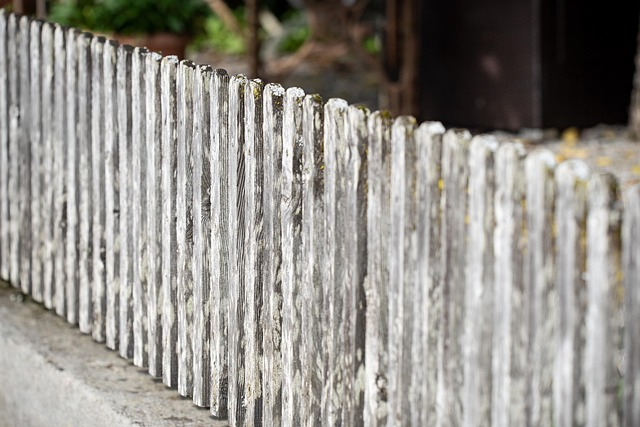In the historic city of New Bedford, Massachusetts, ornamental fencing plays a significant role in defining urban landscapes. This article delves into the rich history of fencing in New Bedford, exploring its evolution from functional barriers to intricate artistic expressions. We will guide you through popular styles, from traditional designs like Victorian and Gothic to contemporary options, focusing on material choices that enhance aesthetic appeal. Additionally, we’ll cover installation techniques, design customization, and maintenance tips to ensure your ornamental fence stands the test of time in this charming New England town.
- Historical Overview of Fencing in New Bedford
- Popular Ornamental Fence Styles
- Material Considerations for Aesthetics
- Design Trends and Customization
- Installation Best Practices
- Maintenance Tips for Longevity
Historical Overview of Fencing in New Bedford
New Bedford, MA, like many American cities, has a rich history when it comes to fencing styles. Originally settled as a whaling port in the 17th century, the city’s early defenses relied heavily on wooden palisades and stockades to protect against coastal raids. Over time, these functional barriers evolved into more ornamental structures, reflecting the changing aesthetic preferences of the community. The 19th century brought a surge in industrial growth, leading to the introduction of new materials like iron and steel, which enabled the creation of intricate designs that could serve both practical and decorative purposes.
Today, New Bedford’s architectural landscape is dotted with various ornamental fencing styles, ranging from Victorian-inspired lattices to more modern geometric patterns. These fences not only define properties but also contribute to the city’s unique character, showcasing a harmonious blend of historical heritage and contemporary design. The diversity of styles speaks to the city’s adaptability and its residents’ appreciation for both function and aesthetics in their built environment.
Popular Ornamental Fence Styles
In New Bedford, MA, several ornamental fencing styles have gained popularity for both residential and commercial properties. One of the most admired is the traditional Victorian style, characterized by elaborate designs featuring intricate patterns, scrollwork, and floral motifs. This style adds a touch of elegance and history to any landscape. Another favorite among locals is the contemporary metal fence with clean lines and geometric shapes, offering both aesthetic appeal and security.
For a more natural look, many homeowners opt for wooden fences adorned with decorative elements such as cutouts or lattice work. These styles blend seamlessly with the surrounding environment, providing privacy while still allowing natural light to filter through. Additionally, wrought iron fences are making a resurgence in popularity due to their enduring strength and versatility, available in various designs from classic to modern art-inspired patterns.
Material Considerations for Aesthetics
When it comes to ornamental fencing, the material choices play a significant role in dictating the aesthetic appeal and overall look of your New Bedford, MA property. Wrought iron is a timeless classic that exudes elegance and sophistication; its intricate designs add a touch of Victorian charm. However, maintenance can be a concern as it requires regular painting or coating to prevent rusting.
Wooden fences offer a warmer, more natural aesthetic with various options like cedar or pine. These materials are versatile, allowing for creative designs and customization. While they may require more upkeep than metal, modern treatments can enhance durability and protect the wood from the elements, ensuring longevity and maintaining their visual appeal over time.
Design Trends and Customization
In New Bedford, MA, ornamental fencing styles have evolved to reflect both contemporary design trends and the unique character of the region. Homeowners and property managers increasingly seek fences that serve not only as functional barriers but also as eye-catching architectural elements. This has led to a surge in popularity for intricate ironwork, featuring delicate patterns and scrollwork that add a touch of elegance to any outdoor space. Customization plays a significant role in this trend, with many clients collaborating closely with local artisans to create one-of-a-kind designs that reflect their personal style and the history of their properties.
From traditional New England motifs to modern geometric patterns, design choices are vast. Wrought iron, now often combined with weathered wood or vinyl coatings, allows for intricate detailing and versatility in fitting various aesthetic preferences. Property owners can opt for classic styles reminiscent of historic homes or embrace more contemporary looks that blend seamlessly with modern architecture. This customization not only enhances the curb appeal of New Bedford residences but also ensures that each fence is a unique reflection of its owner’s vision.
Installation Best Practices
When installing ornamental fencing in New Bedford, MA, proper preparation and technique are essential for a long-lasting, visually appealing result. Before beginning, assess your property line and ensure all necessary permits have been obtained to avoid any legal issues. Clear the installation area of debris, trees, or other obstructions, providing ample space for materials and equipment.
During installation, follow these best practices: level the posts accurately to prevent uneven fencing; secure posts firmly in concrete to withstand weather conditions; use high-quality hardware and fasteners to maintain durability; and ensure proper spacing between vertical rails to allow for expansion and contraction of materials without warping or damaging the fence. Regular cleaning and maintenance, including inspection for damage, will keep your ornamental fence looking its best for years to come.
Maintenance Tips for Longevity
Regular cleaning and inspection are key to maintaining your ornamental fence in New Bedford, MA. Remove any debris, such as leaves or twigs, that can accumulate over time and potentially damage the fence’s finish. Use a soft-bristled brush and mild soap for gentle cleaning to avoid scratching the surface.
Inspect your fence regularly for signs of wear and tear, such as rust on metal parts, cracks in wood, or loose posts. Addressing these issues promptly will prevent further damage and ensure the longevity of your ornamental fence. Apply a fresh coat of paint or sealant as needed to protect it from the elements and maintain its aesthetic appeal.
